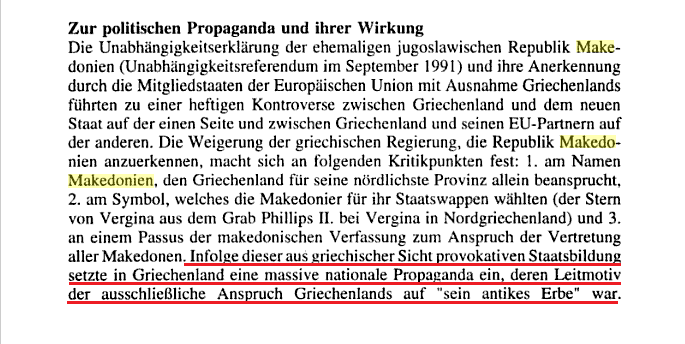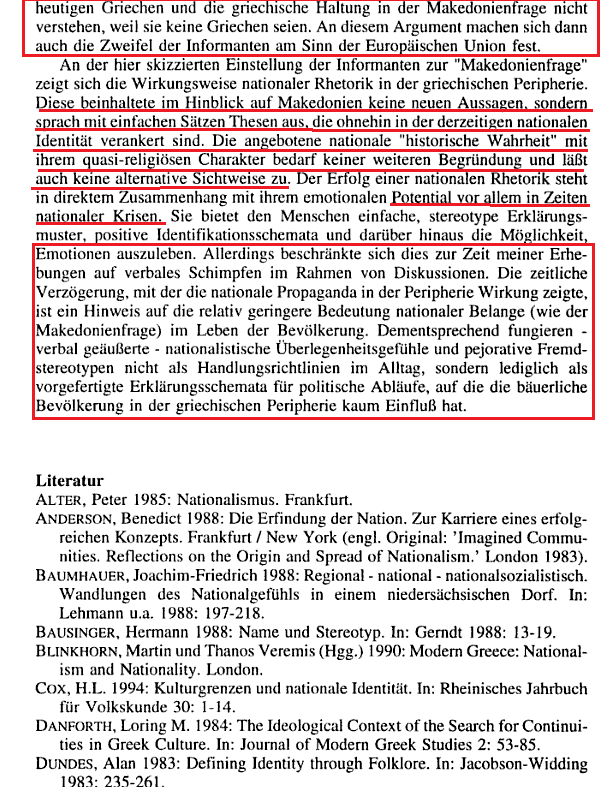The Slavic speaking majority in the Region of Macedonia had been referred to (both, by themselves and outsiders) as Bulgarians, and that is how they were predominantly seen since 10th,[8][9][10] up until the early 20th century.[11] According to Encyclopædia Britannica, at the beginning of the 20th century the Macedonian Bulgarians constituted the majority of the population in the whole region of Macedonia, then part of the Ottoman Empire.[12] The functioning of the Bulgarian Exarchate then aimed specifically at differentiating the Bulgarian from the Greek and Serbian populations on an ethnic and linguistic basis, providing the open assertion of a Bulgarian national identity.[13] However one basic distinction between the political agendas of local intelligentsias was clear. The Macedonian Greeks and Serbs followed, in general, the directives coming from their respective centers of national agitation, while by the Bulgarians the term Macedonian was acquiring the significance of a certain political loyalty, that progressively constructed a particular spirit of regional identity.[14] The Balkan Wars (1912–1913) and World War I (1914–1918) left Ottoman Macedonia divided between Greece, Serbia, Bulgaria, and Albania and resulted in significant changes in its ethnic composition. The immediate effect of the partition of Ottoman Macedonia were the nationalistic campaigns in areas under Serbian and Greek administration, which expelled Bulgarian churchmen and teachers and closed Bulgarian schools and churches. As a consequence a sizable part of the Slavic population of Greek and Serbian Macedonia fled to Bulgaria or was resettled there by virtue of a population exchange agreements. The Bulgarian population in Vardar Banovina was regarded as "Southern Serbs" and a policy of Serbianization was implemented. Within Greece, the Southern Macedonians were designated "Slavophone Greeks".[15]
However most researchers agree that the bulk of the Slavic population in the region had a Bulgarian national identity until the early 1940s, when the Bulgarian troops, occupying most of the area, were greeted as liberators.[16] Pro-Bulgarian feelings among the local Slavic population prevailed, including Greece and Serbia.[17] After the Second World War and Bulgarian withdrawal, on the base of the strong Macedonian regional identity a process of ethnogenesis started and distinct national Macedonian identity was formed.[18] As a whole an appreciable Macedonian national consciousness prior to the 1940s did not exist.[19][20][21] At that time even the political organization by the Slavic immigrants from the region of Macedonia, the Macedonian Patriotic Organization has also promoted the idea of Macedonian Slavs being Bulgarians.[22] The nation-building process was politically motivated and later reinforced by strong Bulgarophobia and Yugoslavism.[23] The new authorities began a policy of removing of any Bulgarian influence and creating a distinct Slavic consciousness that would inspire identification with Yugoslavia.[18] With the proclamation of the new Socialist Republic of Macedonia, there were started measures that would overcome the pro-Bulgarian feeling among the population.[24] It has been claimed that from 1944 till the end of the 1940s people espousing a Bulgarian ethnic identity had been oppressed.[24][25] According to Bulgarian sources more than 100,000 men were imprisoned and some 1,200 prominent Bulgarians were sentenced to death.[24][25] In addition, the inconsistent policy towards the Macedonian Bulgarians followed by Communist Bulgaria at that time has thrown most independent observers ever since into a state of confusion, as to the real ethnicity of the population even in Bulgarian Macedonia.[26][27] Practically as a consequence the rest of this people, with exception of Bulgaria proper, were eventually macedonized, hellenized or albanized.[28]




 Ihr betreibt Propaganda im höchsten maße
Ihr betreibt Propaganda im höchsten maße


